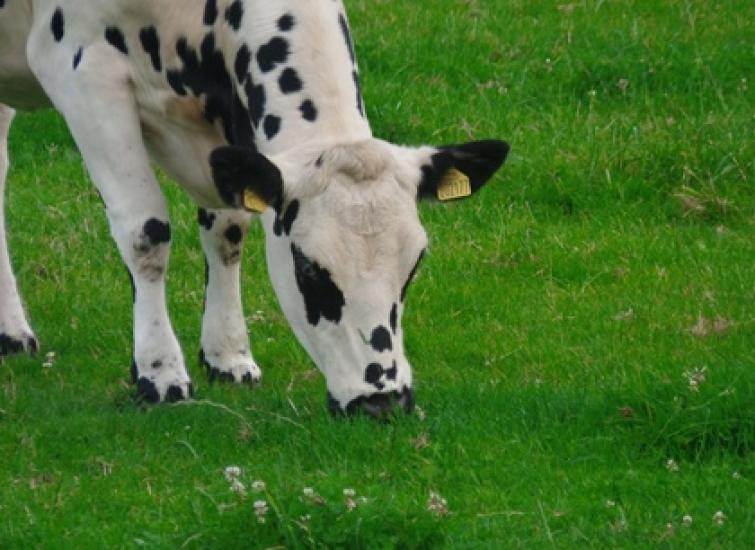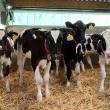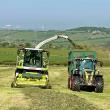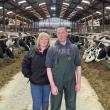Advanced Robot’s experience means they are always challenging me to get the best out of the cows, they maintain the herd’s health status whilst also improving performance.
Managing Cows at Grass from Spring into Summer
Calum Smith from Advanced Nutrition talks about optimising herd health over the coming months.

2020 has certainly been a rollercoaster ride already! The year started off wet, then March was a cold month, April one of the driest on record and now we’ve the ongoing effects of Covid-19 to contend with. One thing we can always rely on is the seasons coming and going and as everything else is happening around us, spring has now sprung and cows are being turned out up and down the country with some of my clients having been out for three weeks now as I write this.
It’s important to have a plan for your grazing cows to get the most from your grass throughout the season. However, continual monitoring is key to ensure you have the flexibility to respond to these changing situations.
I normally begin to look at spring grazing back in November when the cows come in. I’ll start by walking the fields for clients, looking for any issues within the fields, like drainage, mole hills, fencing and soil structure. In February we walk together measuring the grass to gain an insight into growth rates, so we can make plans and choose a date for turn out based on grass growth. That way we know we’ve hit it right and have a wedge to work off at the beginning of the grazing season. There are a few routes to go down when grazing, all with different pros and cons, I prefer the paddock system myself. It’s an efficient use of grass, which once set up, is easy to use for the farmer and the cows. Water troughs are always close at hand and it creates the perfect grass wedge as paddocks can be fertilised at different stages.
Nutrition
When turning cows out I look for between 2800-3100kg Dry Matter/Hectare, with residuals at 1500kg after the cows have been in. The number of days in each paddock will be determined by the number of cows, but I would use four days max as a rule of thumb. You’ll tend to see peak grass growth from May through to July and over these months I am looking to get 14 - 19kgs of dry matter into the cows. When looking back to March I have been getting 8kgs of dry matter into the cows on average. We test the grass fortnightly to measure the nutrients which helps us to maximise metabolizable energy (ME). We have been using a buffer of silage, fibre sources such as hay, straw, or whole crop and a lower protein blend to balance the diet as intakes and grass growth improve to stabilise the rumen. This is coupled with a 16%-18% protein, high energy and high digestible fibre cake to target top performing cows. As we are getting towards the 14kg dry matter and above on intakes I will monitor refusals at the trough and pull the rations back there to allow intake at grass to rise. I find the key is not to fill the cow up too much in the trough as she will waste grass – this is your cheapest form of feed but is very variable and needs to be well balanced to help the cow perform.
Monitoring
Maintaining cow health through rumen function is a key focus for feeding. When we are breeding, we use a high fibre base diet and cake, which helps to slow the transition through the cow so she can utilise more protein. The resultant effect is to improve fertility as there is less free ammonia in the blood which potentially can kill embryos. It also has a positive effect on milk solids, mainly butterfat, which in this current climate, if milk processors are asking for a reduction in production, then solids will have a massive cost benefit improvement to any business.
Additionally, if producers are looking to cut costs in this current market with partial housed herds, I would look to keep high yielders in and low yielders out, maximising the high yielding group and taking the cost out of low yielders. Cows will then only move into the low group at a certain “day’s in milk” and “Pd pregnant”.
As well as balancing the nutritional input of the cow, points for maintaining cow health can also be gained from monitoring the cows and assessing their environment. Lameness is a key point when grazing, as I find more bruising and damage can appear from stones as they are walking along tracks to the paddocks. To keep on top of digital dermatitis I still want cows to be foot bathed a minimum of three times a week, still foot trimming pre dry, and at 100-120 days and then anything that is needed over and above that. As a First Step Assessor, I do monthly locomotion scores to monitor lameness levels and pick out problem cows. This gives us an accurate indication of lameness in the herd and an independent view.
Once a month we body condition score cows - looking for a score of 2.5. Any cow which is half a score lower will be monitored and if high yielding we will alter parlour feed to offer the cow extra cake to meet her energy demands to stop body condition loss and further problems down the line. Any cows over half a condition score higher will be monitored and questions asked to why based on yield and stage of lactation as if her yield is low at low days in milk we need to look for possible ketosis, and if she is later in lactation, then she could be getting more energy through feeding than she requires.
Grass Growth
Monitoring and flexibility are the key here. If grass growth is starting to get ahead of the cows, then don’t be afraid to take a paddock or strip out and bale it to get you back into your cycle - you can never have enough bales! When trying to get as close to a 21-day rotation as possible, always keep an eye on where you will be in three weeks’ time to allow you to plan. There may not be a set rotation of paddocks when grass growth is at peak. The table below shows growth trends for the past three years. We had a lot of early growth in March and that straightened out at the start of April, but the last few weeks of heat have pushed growth on again. This year we have seen a similar season to 2018 with a longer prolonged warm spell at the end of April which should push covers further on to utilise fertiliser.


Looking at the current climate with the milk market and the spring so far, if the summer continues the same way, then utilising grass and managing your grazing system will be the key to sustaining profit. Keep looking at contract requirements as kg’s of solids, as well as cow health, as these are becoming more beneficial for farmers to improve on.
Article first published in the May 2020 edition of British Dairying
〈 BACK




